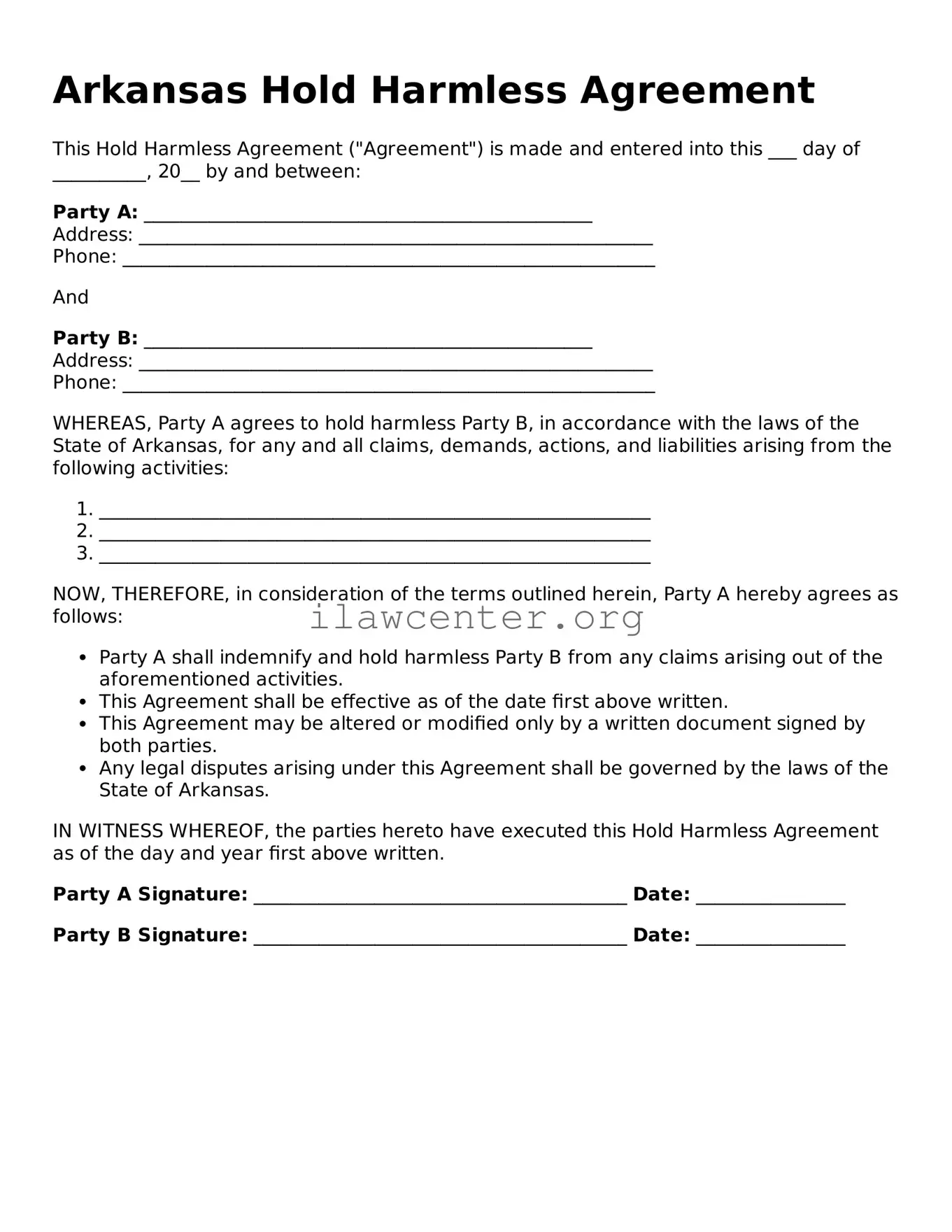Instructions on Utilizing Arkansas Hold Harmless Agreement
Once you have the Arkansas Hold Harmless Agreement form in front of you, it's important to take your time and carefully provide the required information. Completing this form accurately helps ensure that all parties understand their responsibilities. The following steps outline how to fill out this agreement effectively.
- Begin by entering the date at the top of the form. This indicates when the agreement is being made.
- Next, fill in the names of the parties involved. Ensure that you include the full legal names of all individuals or entities submitting the agreement.
- Provide the address for each party listed. Accurately completing this section ensures that all parties can be contacted if needed.
- Clear space will likely be provided for you to describe the specific activity or event related to the agreement. Detail this information clearly.
- In the designated area, list any specific risks or hazards associated with the activity. Be thorough to avoid misunderstandings later on.
- Each party should review the agreement carefully after filling it out. It's important that everyone understands their commitments and the implications of the agreement.
- Finally, ensure all parties sign and date the form at the bottom. Without signatures, the agreement may not be considered valid.
Once completed, keep a copy of the agreement for your records and provide copies to all parties involved. It’s crucial to retain this document for future reference should any questions or concerns arise regarding the agreement.
